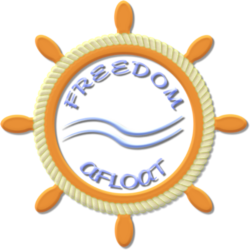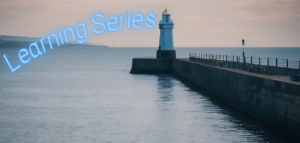The Advantages and Disadvantages of Radar on Small Boats: A Comprehensive Review
For small privately-owned sailing yachts and motor cruisers, radar technology offers a blend of benefits and challenges. Modern radar systems are designed to enhance safety, navigation, and operational convenience, but their implementation on small vessels is not without complexities.
This article examines the advantages and disadvantages of radar technology in the context of small boats, focusing on privately owned vessels. It also highlights some of the most current radar products available on the market.
Advantages of Radar on Small Boats
1. Improved Safety and Collision Avoidance
Radar is considered a vital tool for detecting and avoiding hazards, especially in adverse conditions such as fog, rain, or darkness. It provides the capability to identify other vessels, landmasses, and even floating debris well before they are visible.
For instance, the Simrad Halo20+, which has a range of up to 36 nautical miles, is designed to deliver rapid updates. This makes it particularly useful for detecting fast-moving vessels and nearby weather systems.
2. Navigation in Poor Visibility
Unpredictable weather is a common challenge for small boat operators, particularly in coastal regions. Radar enhances situational awareness in such conditions, serving as a critical navigation tool when GPS alone may not suffice.
A practical application of radar is seen in a sailing yacht navigating a dense fog bank. Radar can assist in locating channel markers, reducing the risk of straying into shallow waters or colliding with unseen obstacles.
3. Integration with Advanced Navigation Systems
Modern radar units are increasingly designed to integrate seamlessly with multifunction displays (MFDs) and electronic navigation systems. This allows radar data to be overlaid on digital charts, offering a comprehensive view of the surrounding area.
The Garmin Fantom 18 radar exemplifies this functionality. It integrates with Garmin MFDs and features MotionScope technology, which detects and highlights moving targets.
4. Enhanced Awareness in Crowded Areas
In high-traffic regions, such as marinas or busy harbours, radar provides an effective means of tracking multiple targets simultaneously. This capability helps prevent collisions and ensures safer manoeuvring in crowded waterways.
5. Weather Pattern Detection
Some radar systems are equipped with weather detection features, making them invaluable for identifying approaching squalls or other adverse conditions.
The Furuno DRS4D-NXT radar, for instance, incorporates Doppler technology and a Rain Mode feature, distinguishing weather patterns from other radar targets.
Disadvantages of Radar on Small Boats
1. High Costs
The cost of radar equipment remains a significant consideration for small boat owners. Quality radar units, along with installation and necessary displays, represent a considerable investment.
Prices vary widely. For example, an entry-level radar system such as the Raymarine Quantum 2 starts at approximately $1,800, while more advanced units can exceed $4,000.
2. Complexity and Learning Curve
Operating radar systems effectively requires a degree of technical proficiency. For small boat owners unfamiliar with radar, understanding features such as gain adjustment, sea clutter settings, and Doppler colour coding can be daunting.
3. Space and Power Limitations
Radar installation often requires mounting equipment on a mast or radar arch, which can be challenging on small vessels with limited space. Additionally, radar systems consume significant power, potentially straining the electrical systems of smaller boats.
To address these limitations, products such as the B&G Vulcan Radar Bundle offer compact and energy-efficient solutions tailored to smaller sailing yachts.
4. Maintenance Challenges
In the saltwater environments where most small boats operate, radar systems are subject to wear and tear. Regular maintenance is necessary to ensure continued performance, and repairs can be expensive if critical components fail.
Durable options like the Furuno 1815 radar are recommended for minimizing maintenance needs and ensuring reliable operation.
5. Overreliance on Technology
While radar is a valuable tool, overdependence on it may lead to complacency. Operators must continue to exercise good seamanship, including maintaining a proper lookout and adhering to navigational best practices, to ensure safety.
Current Radar Systems for Small Boats
1. Simrad Halo20+
- Features:
- Compact design with a range of 36 nautical miles.
- Instant-on technology for quick startup.
- Advanced pulse compression for superior target definition.
- Ideal For: Small motor cruisers and sailing yachts seeking high performance in a compact package.
2. Garmin Fantom 18
- Features:
- MotionScope Doppler radar for identifying moving targets.
- Solid-state design for reduced power consumption.
- Ideal For: Users seeking Doppler technology and seamless Garmin integration.
3. Raymarine Quantum 2
- Features:
- Doppler collision avoidance technology.
- Wireless connectivity and lightweight construction.
- Ideal For: Budget-conscious operators requiring modern radar features.
4. Furuno DRS4D-NXT
- Features:
- Doppler radar with advanced target detection.
- Specialized modes for weather tracking and bird spotting.
- Ideal For: Offshore anglers and cruisers needing robust weather detection.
5. B&G Broadband 3G/4G Radar
- Features:
- Excellent short-range performance for docking and navigation.
- Simple setup and low energy consumption.
- Ideal For: Sailing enthusiasts prioritizing efficiency and intuitive operation.
Considerations for Radar Installation on Small Boats
Several factors should be evaluated before deciding to install radar on a small boat:
- Vessel Size and Configuration: Smaller vessels may require compact and lightweight radar units that are compatible with their design.
- Operating Conditions: Coastal cruisers and offshore sailors will have different radar requirements, particularly in terms of range and weather detection.
- Power Availability: Boats with limited battery capacity should consider energy-efficient radar models.
- Ease of Use: For less experienced operators, user-friendly radar systems with straightforward interfaces are preferable.
- Budget Constraints: Choosing the right balance between cost and functionality is essential for ensuring a worthwhile investment.
Conclusion
Radar technology significantly enhances safety, navigation, and situational awareness for small sailing yachts and motor cruisers. Modern systems, such as the Simrad Halo20+, Garmin Fantom 18, and Furuno DRS4D-NXT, offer advanced capabilities in compact designs tailored to the needs of small boat owners.
However, radar systems also present challenges, including high costs, technical complexity, and maintenance demands. Boat operators must carefully consider their specific requirements, operating environments, and willingness to invest in and maintain radar equipment.
By making an informed decision, small boat owners can leverage radar technology to improve their boating experience, ensuring safer and more efficient navigation in all conditions.

